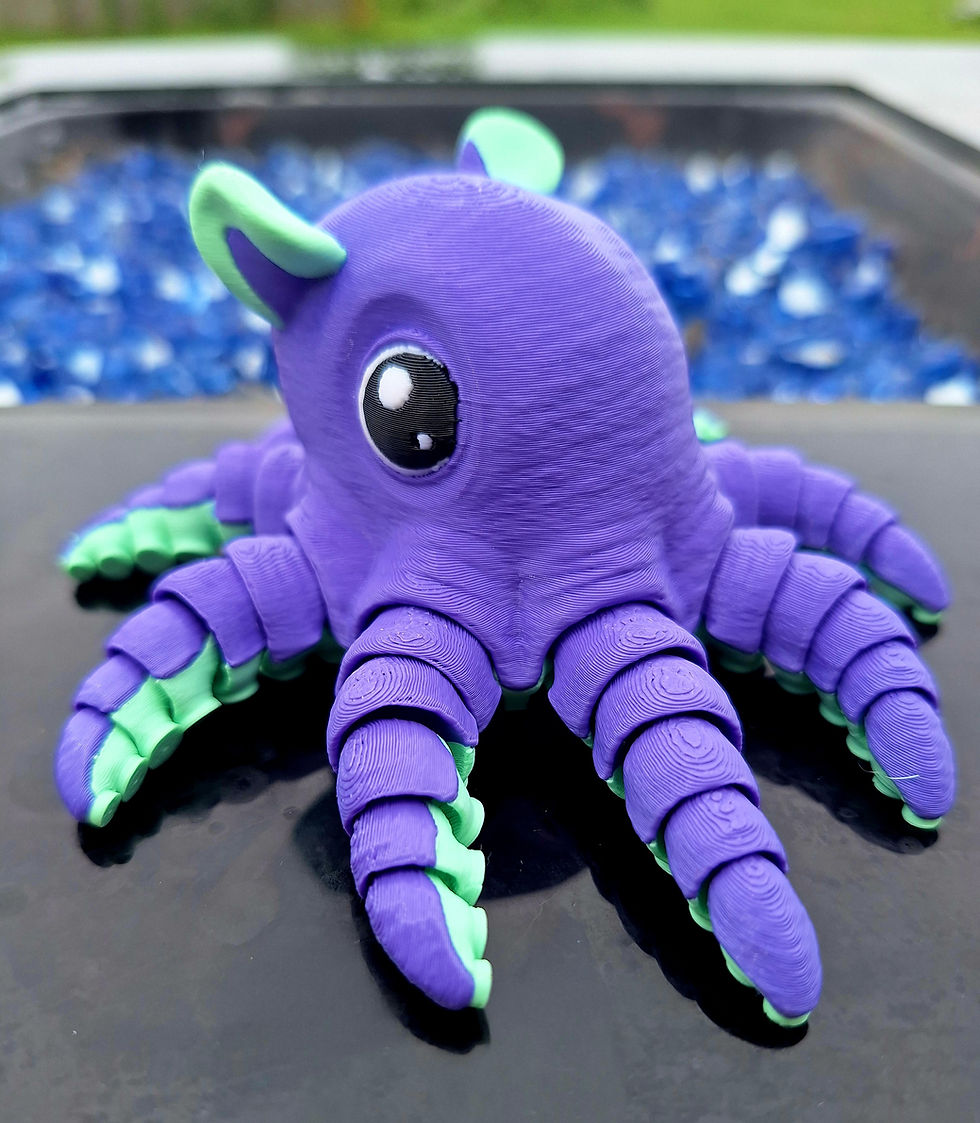🧸 The Best Sensory Tools for Different Age Groups
- WeBe Sensory

- Jun 30
- 3 min read

Supporting Regulation, One Age at a Time
Sensory tools can be life-changing. For many neurodivergent individuals—autistic, ADHD, anxious, sensory-seeking or sensory-avoidant—these tools provide comfort, focus, calm, and connection.
But here’s the thing: sensory needs change with age. What works for a toddler might feel too babyish for a teen. What helps a middle schooler might not work for an overstimulated adult at work.
So, what are the best sensory tools for each age group? Let’s break it down!
👶 Infants & Toddlers (Ages 1–3)
At this stage, sensory play is all about exploration and comfort. Tools should be safe to chew, squish, bang, and shake.
🔹 Best Sensory Tools:
Soft teething chewies
Textured balls and high-contrast rattles
Cause-and-effect toys (light-up buttons, spinners)
Sensory bins with rice, pasta, or water beads (supervised!)
Mini weighted animals or lap pads for calm
Tag blankets or crinkle books
🎯 Goal: Support sensory development through safe exploration.
🧒 Preschoolers (Ages 3–5)
Preschoolers are growing rapidly in sensory awareness. Some become seekers (jumping, chewing, crashing), while others become avoiders (sensitive to noise, touch, or lights).
🔹 Best Sensory Tools:
Chewelry necklaces
Pop-it toys and fidget tubes
Liquid motion timers
Sensory swings or mini trampolines
Playdough and kinetic sand
Weighted plush or lap snakes
Noise-canceling headphones (for loud settings)
🎯 Goal: Help kids self-regulate while developing play and attention skills.
🧠 Elementary (Ages 6–10)
This age group benefits from tools that are fun, but also help with focus, transitions, and emotions—especially in classrooms or social situations.
🔹 Best Sensory Tools:
Fidget cubes and stretchy bands
Resistance putty or squishy toys
Pencil toppers for oral sensory input
Visual timers or emotion wheels
Breathing cards or calm-down kits
Chair bands for leg movement in class
Weighted lap pads or compression vests
🎯 Goal: Promote focus, emotional regulation, and sensory-friendly learning.
👦 Tweens & Teens (Ages 11–17)
Pre-teens and teens often want tools that are discreet, mature-looking, and socially appropriate. They may struggle more with anxiety, masking, and executive function.
🔹 Best Sensory Tools:
Discreet fidget rings, bracelets, or keychains
Chewable pencil toppers or necklace styles that look like jewelry
Scented putty or mini calm jars
Small weighted shoulder wraps or lap blankets
Stim toys for pockets or backpacks
Apps with visual or auditory regulation prompts
Noise-reducing earbuds or loop-style earplugs
🎯 Goal: Encourage self-regulation and stress relief without drawing unwanted attention.
🧍♀️ Adults
Sensory tools aren’t just for kids! Adults can experience sensory overload, executive dysfunction, or anxiety in work, social, or daily life situations. The right tools can improve focus, reduce burnout, and support sensory regulation.
🔹 Best Sensory Tools:
Fidget jewelry (rings, cuffs, necklaces)
Weighted blankets or lap pads for work or sleep
Stim stones or silent fidget cubes
Noise-canceling headphones or earbuds
Essential oil rollers or scent diffusers
Soft lighting or visual comfort tools (lava lamps, calm jars)
Visual planners, sticky notes, and time timers for task support
🎯 Goal: Provide adult-friendly support for focus, grounding, and sensory care in daily routines.
🧡 Final Thoughts
There’s no one-size-fits-all when it comes to sensory tools—and that’s the beauty of neurodiversity. What matters most is meeting people where they are, with tools that fit their age, preferences, and unique sensory profile.
Whether you’re building a calm corner, packing a sensory travel bag, or shopping for tools to help your teen navigate school, the key is simple: sensory support is self-care.
✨ Want age-appropriate tools curated just for you or your child?
Subscribe to our WeBe Wonderbox™—a monthly sensory subscription filled with calming tools, stim toys, and supports tailored by age and need. All brains welcome. 💛



Comments